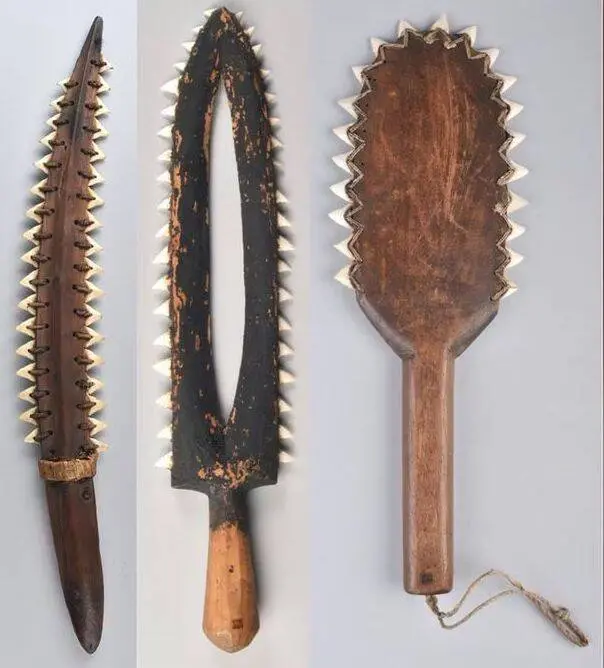Archaeologists conducting excavations on the Indonesian island of Sulawesi have made a remarkable find: 7,000-year-old shark teeth that were likely used by ancient people for rituals or warfare.

As explained in Antiquity, the two sets of shark teeth were discovered in caves in southwestern Sulawesi. They were likely utilized by the Toalean people, an “enigmatic foraging society” that lived on the island as early as 8,000 years ago.
The study authors explained that the teeth, which come from the fearsome jaws of tiger sharks, were clearly modified so that they could be used as tools. The first tooth has two holes drilled through the root. The second has just one hole, but it’s broken and likely originally had two holes as well.
Furthermore, the study authors explained in The Conversation that a microscopic examination of the shark teeth showed that they were once attached to a handle with “plant-based threads and a glue-like substance… [made of] mineral, plant and animal materials.”
“The same method of attachment,” the study authors explained, “is seen on modern shark-tooth blades used by cultures throughout the Pacific.”
So how do they know that the teeth were used as weapons and not, for example, as a tool to cut meat?

The Trustees of The British MuseumThe study authors believe that the shark teeth discovered in Indonesia are similar to “modern shark-tooth blades” like these ones from Kiribati and Hawaii.
As the study authors wrote in The Conversation, the shark teeth have clear signs of wear and tear that indicate human use (as opposed to the natural damage that might occur from a shark eating its prey). This indeed suggests that the Toalean people used the shark teeth to cut things. But studies of modern societies and experiments with shark teeth have suggested that the teeth were used for more than just daily cutting needs.
For starters, experiments with shark teeth showed that they dull easily. This makes them impracticable as a daily cutting implement.
“This fact,” the study authors explained, “as well as the fact shark teeth can inflict deep lacerations, probably explains why shark-tooth blades were restricted to weapons for conflict and ritual activities in the present and recent past.”

M.C. LangleyScratches on the shark teeth suggest they were used by humans, likely as weapons or in rituals.
What’s more, other societies across the world have utilized shark teeth in a similar way. The study authors note that when teeth weren’t used as body decorations elsewhere, “shark teeth were almost universally used to create blades for conflict or ritual — including ritualized combat.”
Indeed, a number of societies have used shark teeth as weapons. The study authors report that a “fighting knife” found in north Queensland had a blade made of 15 shark teeth. In New Guinea and Micronesia, lances, knives, and clubs with shark teeth have also been found. People in Kiribati used shark-tooth daggers, swords, spears, and lances, and shark teeth discovered in Mexico are believed to have been used for ritualistic bloodletting.
As such, the shark teeth weapons found in Sulawesi draw a clear link between the enigmatic Toalean people and other cultures around the world. And because the shark teeth from Sulawesi are 7,000 years old, they also suggest that ancient cultures have been using shark teeth as tools and weapons for much longer than previously believed.
“Whether they cut human or animal flesh,” the study authors wrote, “these shark teeth from Sulawesi could provide the first evidence that a distinctive class of weaponry in the Asia-Pacific region has been around much longer than we thought.”





